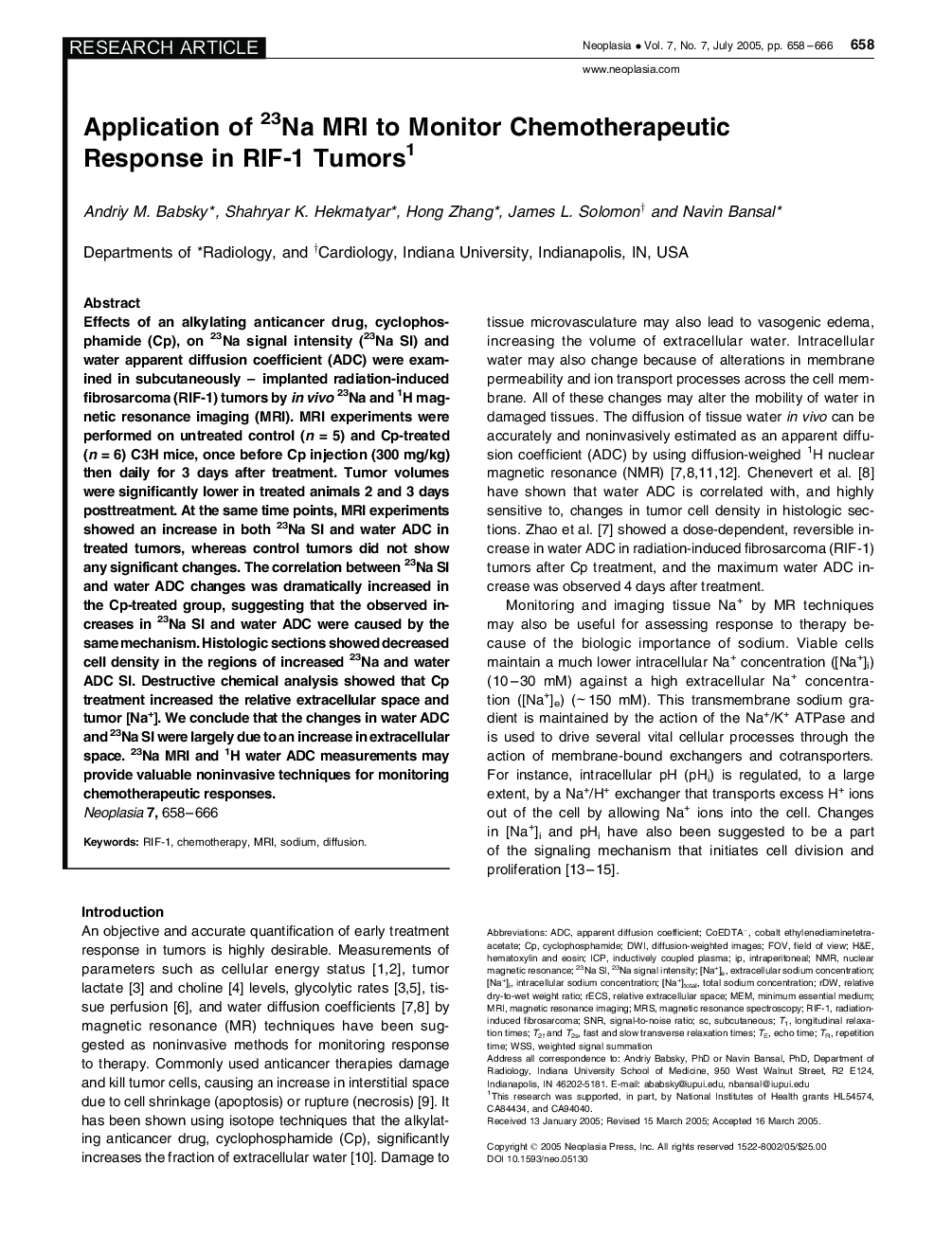| Article ID | Journal | Published Year | Pages | File Type |
|---|---|---|---|---|
| 10915440 | Neoplasia | 2005 | 9 Pages |
Abstract
Effects of an alkylating anticancer drug, cyclophosphamide (Cp), on 23Na signal intensity (23Na SI) and water apparent diffusion coefficient (ADC) were examined in subcutaneously - implanted radiation-induced fibrosarcoma (RIF-1) tumors by in vivo23Na and 1H magnetic resonance imaging (MRI). MRI experiments were performed on untreated control (n = 5) and Cp-treated (n = 6) C3H mice, once before Cp injection (300 mg/kg) then daily for 3 days after treatment. Tumor volumes were significantly lower in treated animals 2 and 3 days posttreatment. At the same time points, MRI experiments showed an increase in both 23Na SI and water ADC in treated tumors, whereas control tumors did not show any significant changes. The correlation between 23Na SI and water ADC changes was dramatically increased in the Cp-treated group, suggesting that the observed increases in 23Na SI and water ADC were caused by the same mechanism. Histologic sections showed decreased cell density in the regions of increased 23Na and water ADC SI. Destructive chemical analysis showed that Cp treatment increased the relative extracellular space and tumor [Na+]. We conclude that the changes in water ADC and 23Na SI were largely due to an increase in extracellular space. 23Na MRI and 1H water ADC measurements may provide valuable noninvasive techniques for monitoring chemotherapeutic responses.
Keywords
MRSWSSFOVDWISNRRDWICPRECSADCRIF-1nuclear magnetic resonanceH&E[Na+]iMRINMRdiffusion-weighted imagesMagnetic resonance imagingminimum essential mediumintraperitonealecho timeRepetition timesubcutaneousSodiumCyclophosphamideChemotherapyapparent diffusion coefficientmagnetic resonance spectroscopyIntracellular sodium concentrationMEMField of viewSignal-to-noise ratioHematoxylin and EosinDiffusioninductively coupled plasma
Related Topics
Life Sciences
Biochemistry, Genetics and Molecular Biology
Cancer Research
Authors
Andriy M. Babsky, Shahryar K. Hekmatyar, Hong Zhang, James L. Solomon, Navin Bansal,
